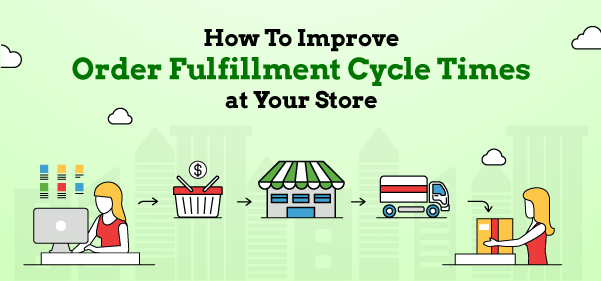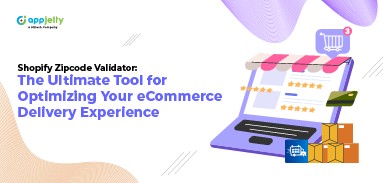The efficiency of order fulfillment can be a game-changer for businesses.
Customers today expect swift delivery and seamless processes, making Shopify stores need to optimize their order fulfillment cycle times.
This blog will provide a detailed guide on achieving that, exploring various strategies and examples to help your Shopify store enhance its operational efficiency.
Defining Order Fulfillment Cycle Times
Order fulfillment cycle times are the time it takes from when a customer’s order is received to when it is processed, picked, packed, and shipped. The shorter this cycle, the happier the customer. Each of these phases described is critical to the process, and it is only through each step that an appreciation for pinpointing areas of improvement is understood.
Streamlining Order Processing
The amount of investment that goes into putting in place an order management system is worth every coin. It calls for the systematization of order entry, assurance of accuracy in every order information, and reduction of errors resulting from manual process activities. For instance, the retail company in clothes can use the system to provide automatic inventory checking and hence not repeat one operation with a shortage of some goods, ensuring greater efficiency in processing the order. Take for example, a customer placing an order for an item in limited quantity; this dynamic update to the inventory system inhibits another customer from purchasing an item where there is only one available simultaneously. The entire fulfillment process is very much streamlined.
Efficient Order Picking
Zone picking demarcates the warehouse into zones, and some employees or teams will work on the assigned zone. In this case, the travel time will be minimal since the delivery agent has to work on the items from his or her zone. For instance, a grocery store may always subdivide its warehouse into zones for fresh produce, dry goods, and frozen items in order to smoothen the picking process. Consider a customer request for fresh fruits, canned items, and frozen stuff. With zone picking, various zones in parallel are picked at the same time by different teams, thus significantly lowering the overall order fulfillment time.
Optimizing Packing Processes
The packing process can be organized, and this will ensure that the quality of the packaging is at a certain standard and at a par level in all packages, hence reducing errors and increasing the efficiency of the whole process. For instance, an electronics retailer would automate the packaging solution for delicate items and, therefore, yield full-proof packaging without compromising speed. For instance, a customer has ordered some delicate electronic gadget. Automated packing systems can package to size the exact item and thus ensure it is protected in transit while still delivering fast packing processes.
Simplifying Shipping Options
This calls for the choice of such shipping partners to ensure that customers receive the orders within their expectations. For example, the company must be in a position to enter into contracts with shipping companies that guarantee transit time at a minimum. For example, the bookshop is likely to be serviced by a courier company reputed for making timely deliveries. He or she does it only when the customer urgently needs some definite book. Quick delivery will ensure faster delivery, which, in turn, will ensure customer satisfaction and loyalty.
Real-Time Tracking and Visibility
Real-time tracking of orders to do away with customers’ suffering from suspense and impatience in waiting for the delivery of their goods.
Through the Shopify Delivery Date, it has made it possible to include tracking systems for its customers to be able to track the status of an order and its location. For example, if yours is a technology shop Shopify store, you will be able to integrate the GPS tracking of the exact location of high-value electronic devices. Customers can track the whole journey from when the item leaves the warehouse to reaching their door. This brings peace of mind and, in effect, more trust in the store’s fulfillment.
Analyzing Order Fulfillment Data
It has to be periodically analyzed with great relevance to find out the loopholes and scope for improvement. The data analytic tools help businesses know the process and thus make informed decisions that can optimize the whole cycle of order fulfillment. For instance, a toy shop will know that certain products are moving fast, and therefore, the same will vary the stocks not in absolute volume but relatively faster-moving ones through analytics to decide on the same. For example, the toy store may analyze data to know that certain toys usually have higher demands during some particular seasons. With this information, they can adjust inventory levels to meet customer demand during peak periods.
Training and Empowering Staff
A well-motivated and trained staff is a major input into efficient order fulfillment. The report recommends that time management, accuracy, and teamwork in training programs should be the best areas to focus on in order to increase employee output. A typical example is a sports equipment store where daily training is taking place, thereby ensuring that the employees are in a position to locate and process all nature of sports gear. Staff that is experienced, especially in peak periods like those which occur preceding major sports events, would handle large volumes of orders properly so that delivery could be well within time. This would achieve customer satisfaction.
Implementing Inventory Management
Inventory management helps prevent overstocking and reduces storage costs. The business can optimize its inventory turnover by having minimum inventory levels and restocking according to the requirements. For example, an office supplies store manages its inventory according to the season so that there are no excess stocks of items corresponding to a season. Thus, the office supply store can be very dynamically respondent to fluctuations in demand for items such as back-to-school supplies so that they are always carrying what the consumers need, but not overstocking and burdening themselves.
Customer Communication and Expectation
It is to manage customer expectations and have clear communication on the delivery times, giving the customer accurate delivery estimates right within the checkout to avoid dissatisfaction. For instance, a furniture shop may be clear in stating that the delivery time for pieces designed specifically for the customer takes longer, therefore ensuring the buying customer receives information in good time. The shop clearly mentions to them that the delivery might take a while with the custom-made furniture. So, the furniture shop properly takes care of the customers’ expectations so that disappointment and dissatisfaction are excluded.
Embracing Technology Trends
Adherence to the technology trends may offer some competitive leveraging. The integration of such can be done for an Internet of Things (IoT) solution for automatic facilitation in optimization for order fulfillment. For example, a fashion retailer may use AI algorithms to predict the trends in order to ensure that what is in demand at the time is available. During checkout, an AI recommendation system can suggest various accessories that would go well with the purchased garment and, in this way add up to the turnover and make customers more satisfied.
Implementing Sustainable Practices
With sustainable practices, the fulfillment process would be much easier while at the same time assisting the environment. From biodegradable packaging to optimized logistics routes for decreasing overall carbon footprints, how could a beauty and cosmetic store contribute to this effect with their product line in terms of skincare products? This enhances value fulfillment to the customers while most probably costing less in the long run.
Conclusion
It can be seen that the need for each of these stages in the process is an art mastered, be it improved order fulfillment cycle times using a comprehensive approach. Technology, logistics, and even staff empowerment are optimized to help develop a fulfillment approach that will meet or exceed what your customers expect. The following examples herein show how the strategies can be embraced across each of the industries to demonstrate the flexibility that can derive from the approaches. As you set out to enhance the order fulfillment of your Shopify store, remember that consistent improvement is the key to adapting and changing in the fast-paced retail environment.
All product and company names are trademarks™, registered® or copyright© trademarks of their respective holders. Use of them does not imply any affiliation with or endorsement by them.





